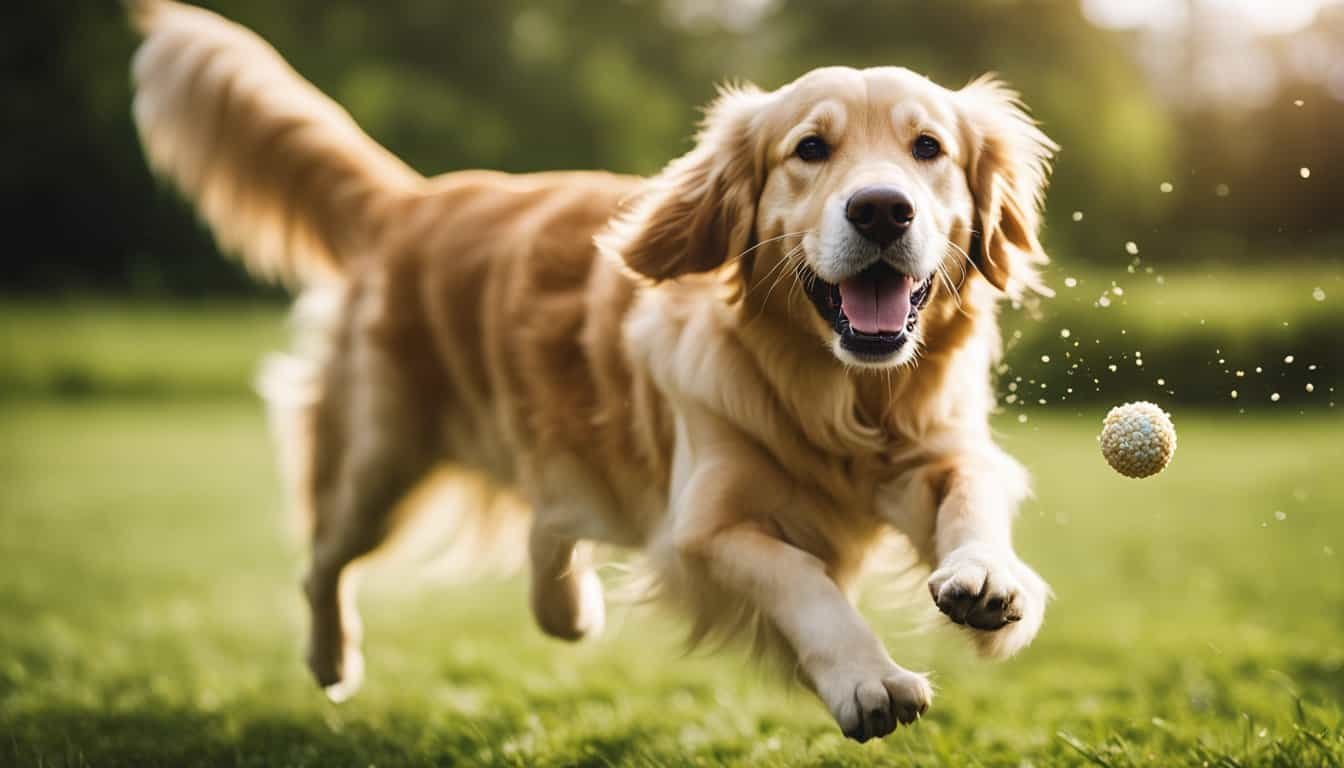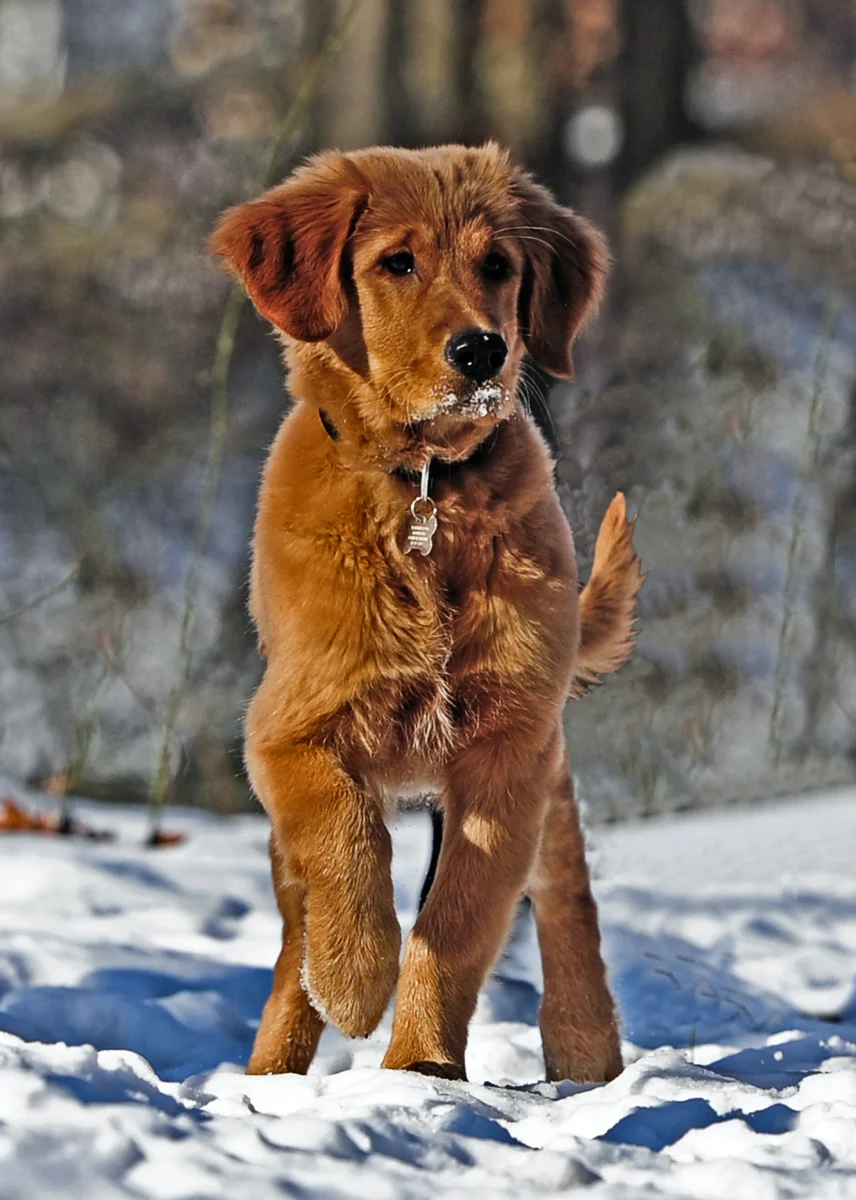If you’re a Golden Retriever owner or considering getting a Golden Retriever, you may have noticed the variety of colors this beloved breed can come in. While the classic blonde coat is the most common, there are other shades that can catch your eye, like red, cream, and even black.
In this article, we’ll take a closer look at Golden Retriever colors, from the most common to the rarest. We’ll also dive into the genetics behind their coat colors and how it can affect their health and temperament.
As someone who has worked with thousands of dogs through dog shelters and breeders, I’m excited to share my knowledge with you. So, if you’re a new dog owner eager to learn more about Golden Retrievers’ colors, keep reading!
An Introduction to Golden Retrievers and Their Colors
Golden retrievers are one of the most beloved dog breeds in the world. Known for their friendly personalities and loyalty, these dogs make excellent companions for families and individuals alike.
One aspect that many new golden retriever owners may not be aware of is the variety of colors that these dogs can come in. While most people think of golden retrievers as being a classic shade of gold, there are actually several different color variations to choose from.
Some common colors include cream, light golden, dark golden, red or mahogany. Each color variation has its own unique characteristics that sets it apart from other shades within this breed.
When selecting a Golden Retriever based on its coloration alone should not be your only concern when choosing your new furry friend; temperament and health should always come first no matter what type or breed you get!
As someone who has worked with thousands of dogs through dog shelters and breeders over the years I cannot emphasize enough how important it is to do research before getting any pet! This includes understanding which coat colours will fit best with your lifestyle needs – whether you want an active pup who loves long walks outdoors or one who enjoys spending time indoors cuddling up next to you on lazy afternoons.
By educating yourself about Golden Retriever colors and their traits beforehand can help ensure happy lives together between both dog owner & canine companion alike!
The most common colors of Golden Retrievers
Golden Retrievers are one of the most beloved dog breeds in the world, and their various coat colors only add to their charm. While there are many different shades of gold that a Golden Retriever can come in, there are three main color variations: light golden, medium golden, and dark golden.
Light golden retrievers tend to have cream-colored coats with hints of gold around their ears and tail. These dogs often have pink noses and pale eyes that almost seem to glow in certain lights.
Medium golden retrievers have a more classic “golden” appearance with rich, warm tones throughout their fur. Their noses may be black or brown depending on genetics, but they always look alert and attentive.
Finally, dark golden retrievers typically have deep mahogany-colored fur that almost looks red when it catches the light just right. These dogs often stand out from other Golden Retrievers due to their strikingly unique coloring.
While all three varieties of Golden Retriever share similar temperaments (friendly, loyal), each variation has its own unique personality quirks as well. For example, light Goldens may be more timid than darker ones because they don’t blend into surroundings as easily; medium Goldens tend to be confident yet still approachable; while dark Goldens can sometimes exhibit stubborn streaks but ultimately remain devoted companions once trained properly.

« how to train a golden retriever to sit
Dark Brown Golden Retrievers: Everything You Need to Know »
Regardless of which color variation you choose for your furry friend at home or adopt from a shelter or breeder who specializes in this breed – remember that every individual dog is special regardless if they adhere strictly by breed standard guidelines!
The less common colors of Golden Retrievers
Golden Retrievers are one of the most beloved dog breeds around the world. Their golden coat is iconic, but did you know that there are actually several less common colors for this breed?
Firstly, there’s the cream-colored Golden Retriever. While they may not have the traditional golden hue, their creamy coat still exudes a warm and loving energy that makes them just as lovable as their more common counterparts.
Another unique color is red. These Golden Retrievers have a reddish tint to their fur and can range from light chestnut to deep mahogany shades. They’re truly stunning to look at and make wonderful companions with equally lovely personalities.
Lastly, we have the rarest of them all – silver or charcoal-colored Golden Retrievers. These dogs possess a strikingly beautiful metallic sheen on their coats that sets them apart from other Goldens in terms of looks alone.
While these less common colors may be harder to find than traditional goldens, they’re still just as capable of being great pets and loyal companions for those lucky enough to welcome them into their homes.
As an experienced dog professional who has worked with thousands of dogs through shelters and breeders alike I can attest that while physical appearance plays a role in selecting your pet it should never be your only factor when adopting or purchasing any animal companion – temperament should always take priority over aesthetics!
The genetics behind Golden Retriever colors
Golden Retrievers are a popular breed of dog, known for their friendly personalities and beautiful coats. However, many new Golden Retriever owners may not be aware of the genetics behind the color variations in this beloved breed.
The three main coat colors for Golden Retrievers are golden, cream, and red. These colors are determined by genes that control pigmentation in the dog’s fur. The gene responsible for these colors is called MC1R.
When both parents carry two copies of the dominant “golden” allele (symbolized as GG), their offspring will always have a golden coat color. If one parent carries only one copy of this allele (Gg) and the other carries two copies of recessive “cream” alleles (cc), then approximately 50% of their puppies will have a golden coat color while 50% will be cream or light-colored.

Red-coated Golden Retrievers result from an additional mutation on top of GG genotype which produces eumelanin pigment instead phaeomelanin pigment which causes red coloring to appear when combined with “gold”. This means that if both parents carry at least one copy each from different sets among GG-golden type or EE-recessive black type they can produce Red colored pups after mating.
It is important to note that while genetics play a significant role in determining your puppy’s coat color, environmental factors such as sunlight exposure can also affect it over time.
As someone who has worked with thousands dogs through shelters and breeders alike I would like to stress upon every new owner out there reading this article: whatever your dog’s genetic makeup might be – cherish him/her all same! Because at end it’s not just about how pretty they look but what joy they bring into our lives!
How coat color can affect a Golden Retriever’s health and temperament
Many new Golden Retriever owners may not realize that the color of their dog’s coat can actually have an impact on their health and temperament. While all Golden Retrievers share similar traits, there are subtle differences between each coat color.
For example, darker colored Goldens tend to have higher levels of melanin in their skin and fur. This means they are less susceptible to sunburns and other skin ailments. On the other hand, lighter colored Goldens may be more prone to allergies or sensitivity issues due to a lack of protective pigmentation.

In terms of temperament, some studies have suggested that darker coated Goldens may exhibit more assertive or dominant behavior while lighter coated ones tend towards being more submissive or docile. However, it is important to note that these findings are not definitive and individual personality can vary greatly within any given breed.
Regardless of coat color though, it is crucial for all Golden Retriever owners to prioritize proper nutrition and exercise for optimal health outcomes. Consult with your veterinarian about any concerns you may have regarding your furry friend’s well-being – regardless if they’re a golden retriever with a light cream-colored coat or one with dark brown fur!
Conclusion
If you’re a Golden Retriever lover, understanding all the different coat colors can be daunting. But after reading this article, hopefully you have a better understanding of why some shades are more common than others and what they could mean for your dog’s health and temperament. To learn even more about these amazing pups or to find one that fits with your lifestyle, be sure to reach out to experienced breeders who specialize in Golden Retrievers!







